My attempt and learning to build a Bazi Calculator using AI and/or No code method to build as fast as possible.
Both Bolt and Lovable made assumptions and built the solution. However, Lovable made a better design choice. Even communicated what it was doing. Replit wanted more information. Both allowed you to edit the code it has generated using Git. So you can work on the code together with the AI. But the idea is that you don’t need to code in fact you are charged by the amount of prompts you give the AI to edit the code/website/webapp.
Bolt and V0 built something very technical. Can be improved and worked on. But visually is not as good as lovable. Replit has more powerful development steps. It creates fork points that you can go back to as version control lets you select features you want with a checkbox and even creates screenshots before changes.
For Reference this is the best in the industry.

Bolt
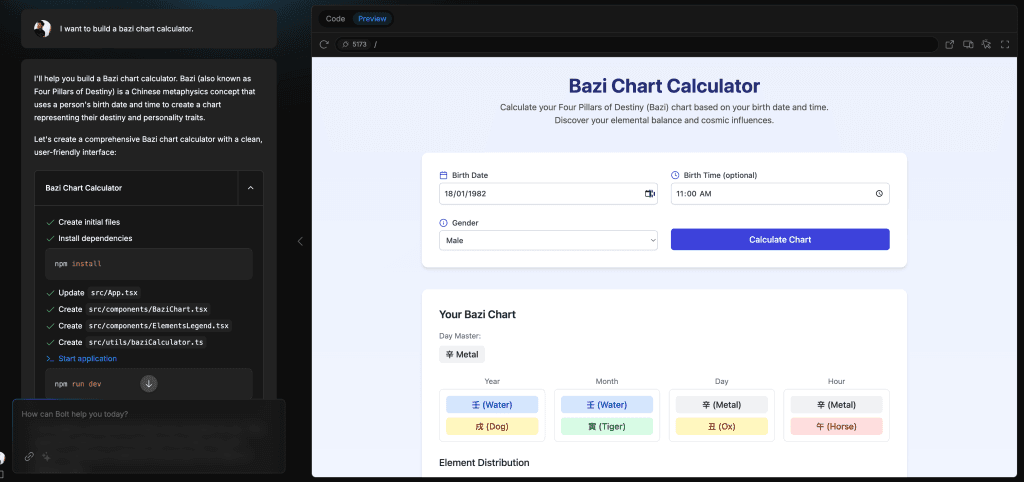
v0
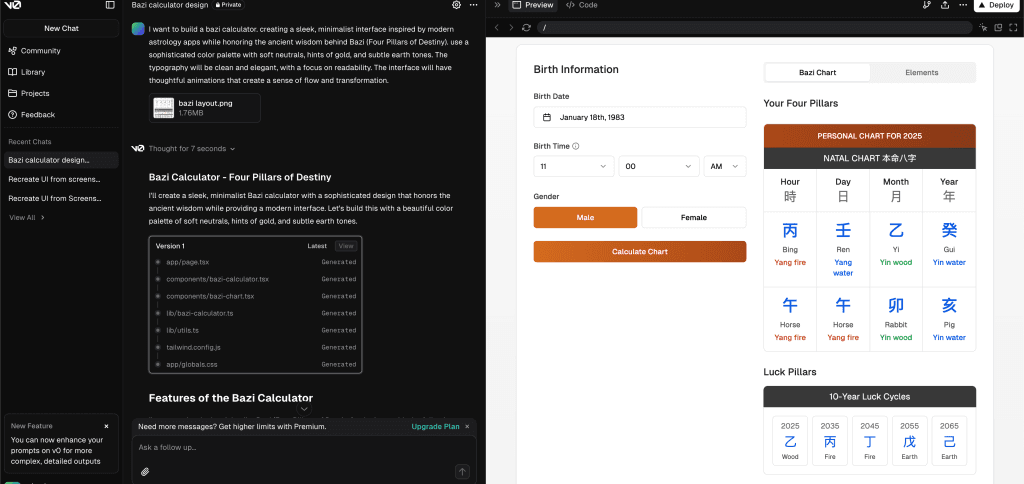
Replit
I provided replit with an image of the layout and information and features i wanted and gave it a simple prompt about what i wanted. Like a product manager it started to communicate the road map.
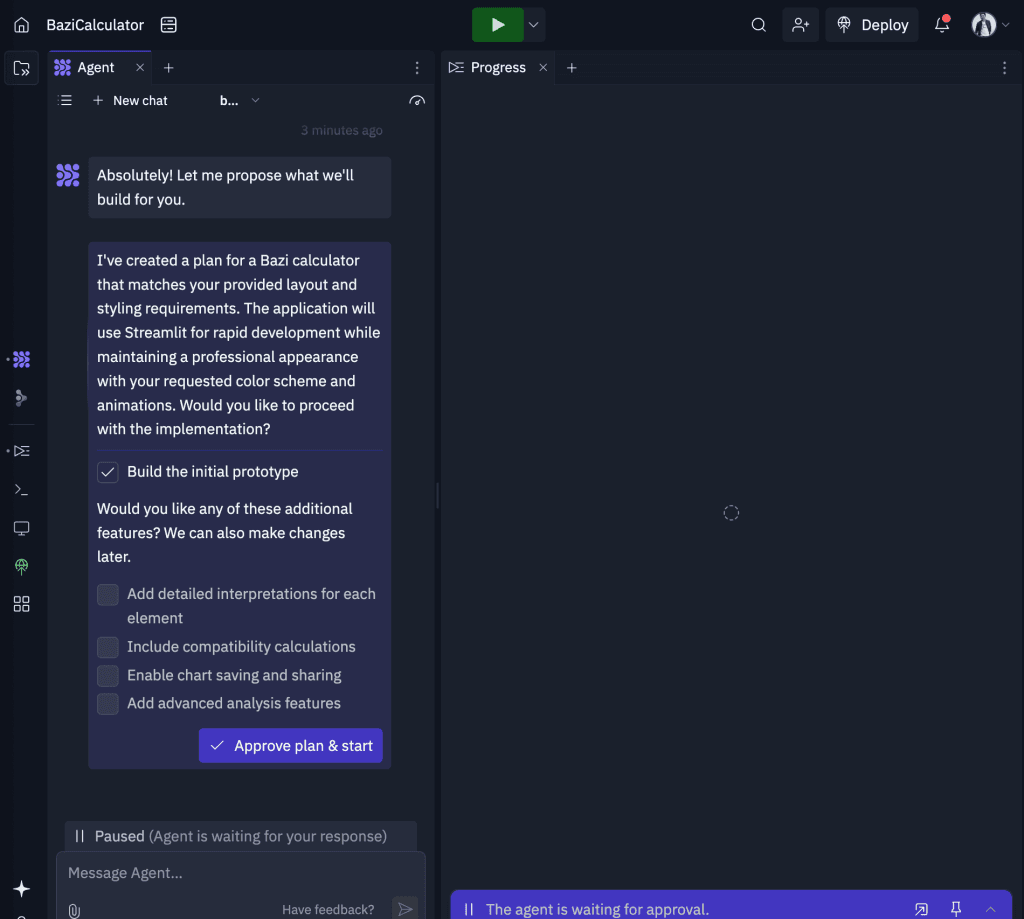
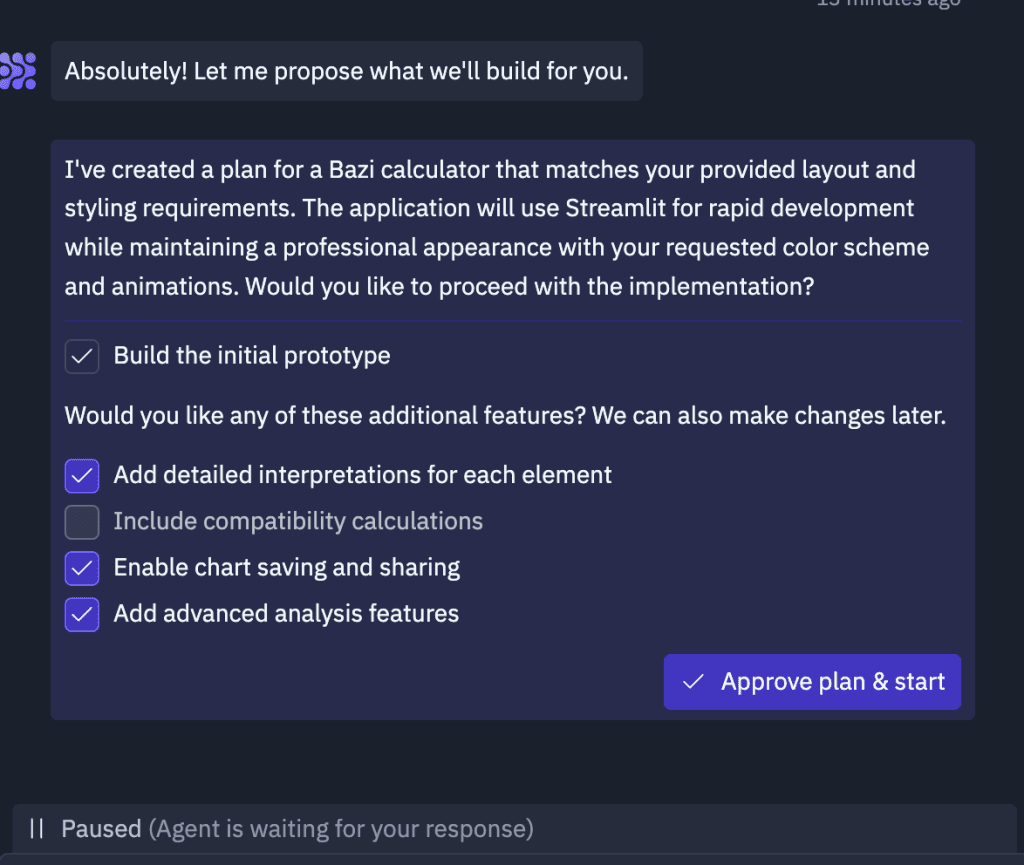

Lovable
Made a great assumption and continued and made something beautiful immediately. Not only that the continous build and improvement after that is amazing.
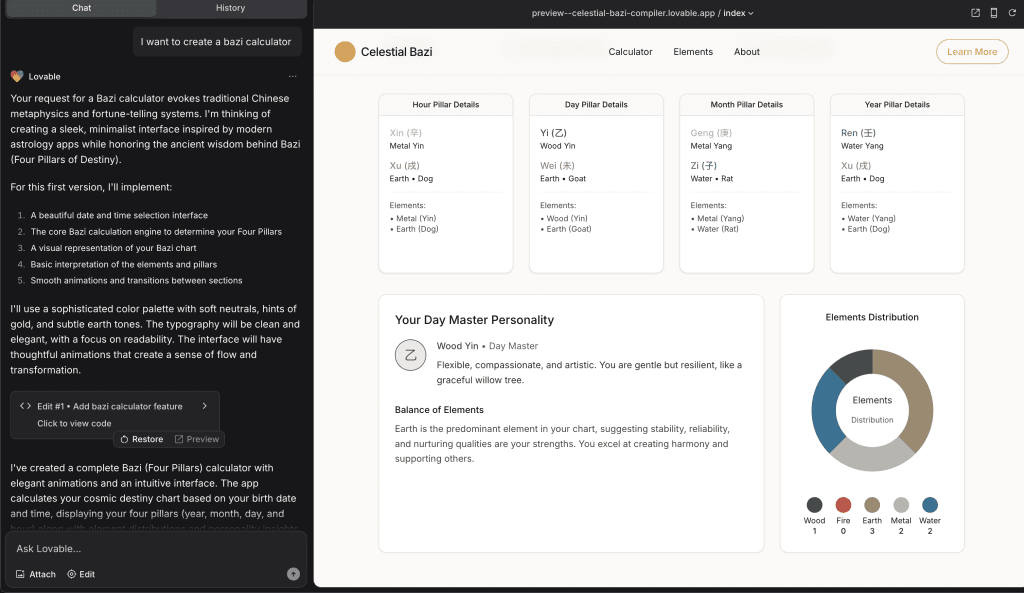
Debug/logging
It even automatically creates logs of what you need so that you can check the implementation in the console log as you build your web app.
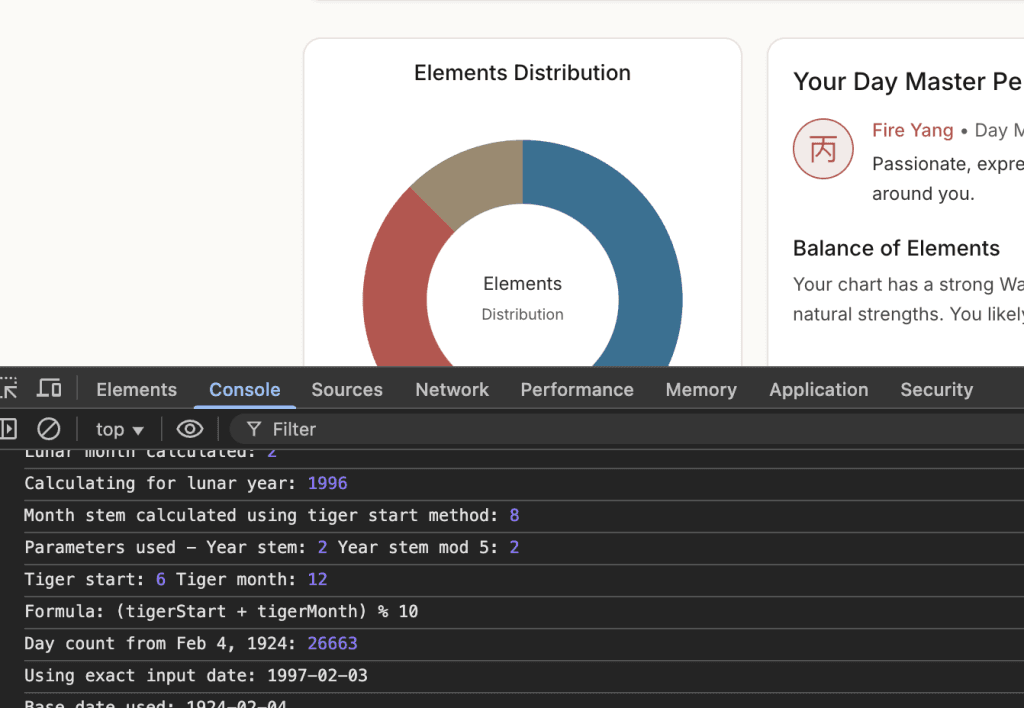
Final Thoughts: AI Can Build It—But You’ve Gotta Be in the Driver’s Seat
Lovable blew Replit out of the water in most areas—cleaner design, better layout reproduction from screenshots, and somehow spun up a working web app in just 48 hours… with barely any code written. Wild, right? You can see the result here: skychew.com/bazi
But let’s be real—it wasn’t all rainbows and smooth sailing.
Knowing how to code still mattered. The AI would sometimes miss obvious instructions or go way overboard with “clever” fixes. When things got weird, jumping in manually was usually the fastest way to get back on track. Lovable’s design suggestions? Sometimes genius. Sometimes like a runaway train. Unlike Replit (which checks in before applying code changes), Lovable just… does it. Fast, but kind of sketchy once things get complex.
One big hiccup? AI loves to over-engineer. Without constraints, it starts chasing its tail—adding unnecessary layers, making things less stable. I had to step in, guide it, and occasionally break things down step by step (or just fix the code myself) to escape the problem spiral.
To its credit, Lovable does log its actions to the console, which helped keep tabs on what it was messing with. But as the project grew, it became clear: if you want to keep things stable and predictable, being able to read, write, and wrangle code is still your best insurance policy.
At the end of the day, AI’s a great co-pilot—but you’ve still got to steer.



